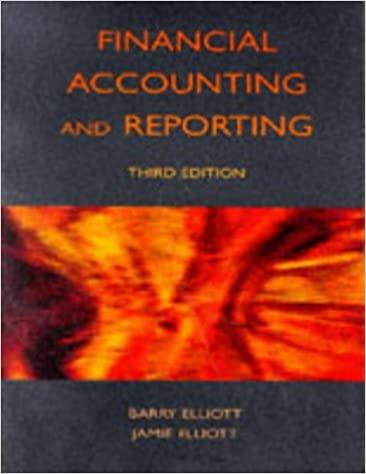Answered step by step
Verified Expert Solution
Question
1 Approved Answer
Ratio Analysis of Comparative Financial Statements Amounts from the comparative income statement and balance sheet of Miller Electronics Corporation for the last two years are
Ratio Analysis of Comparative Financial Statements
Amounts from the comparative income statement and balance sheet of Miller Electronics Corporation for the last two years are as follows:
| Miller Electronics Corporation Comparative Income Statement For Years Ended December 31, 20-2 and 20-1 | ||||
|---|---|---|---|---|
| 20-2 | 20-1 | |||
| Net Sales (all on account) | $650,220 | $420,600 | ||
| Cost of goods sold | 395,410 | 258,668 | ||
| Gross profit | $254,810 | $161,932 | ||
| Administrative expenses | $63,518 | $42,288 | ||
| Selling expenses | 65,992 | 43,936 | ||
| Total operating expenses | $129,510 | $86,224 | ||
| Operating income | $125,300 | $75,708 | ||
| Interest expense | 1,282 | 1,204 | ||
| Income before income taxes | $124,018 | $74,504 | ||
| Income tax expense | 31,005 | 13,630 | ||
| Net income | $93,013 | $60,874 | ||
| Miller Electronics Corporation Comparative Balance Sheet December 31, 20-2 and 20-1 | ||||
|---|---|---|---|---|
| 20-2 | 20-1 | |||
| Assets | ||||
| Current assets: | ||||
| Cash | $42,900 | $22,006 | ||
| Receivables (net) | 73,642 | 47,510 | ||
| Merchandise inventory | 92,060 | 50,396 | ||
| Supplies and prepayments | 3,788 | 1,158 | ||
| Total current assets | $212,390 | $121,070 | ||
| Property, plant, and equipment: | ||||
| Office equipment (net) | $12,150 | $8,490 | ||
| Factory equipment (net) | 105,360 | 71,190 | ||
| Total property, plant, and equipment | $117,510 | $79,680 | ||
| Total assets | $329,900 | $200,750 | ||
| Liabilities | ||||
| Current liabilities | ||||
| Notes payable | $10,000 | $6,000 | ||
| Accounts payable | 43,524 | 30,242 | ||
| Accrued and withheld payroll taxes | 6,250 | 5,400 | ||
| Total current liabilities | $59,774 | $41,642 | ||
| Stockholders' Equity | ||||
| Common stock ($10 par) | $100,000 | $84,000 | ||
| Retained earnings | 170,126 | 75,108 | ||
| Total stockholders' equity | $270,126 | $159,108 | ||
| Total liabilities and stockholders' equity | $329,900 | $200,750 | ||
Required:
Calculate the following ratios and amounts for 20-1 and 20-2. Round all calculations to two decimal places. Use 365 days when computing the accounts receivable and merchandise inventory turnover.
| (a) | Return on assets (Total assets on January 1, 20-1, were $175,750.) |
| (b) | Return on common stockholders' equity (Total common stockholders' equity on January 1, 20-1, was $106,944.) |
| (c) | Earnings per share of common stock (The average numbers of shares outstanding were 8,400 shares in 20-1 and 9,200 in 20-2.) |
| (d) | Book value per share of common stock |
| (e) | Quick ratio |
| (f) | Current ratio |
| (g) | Working capital |
| (h) | Receivables turnover (Net receivables on January 1, 20-1, were $39,800.) |
| (i) | Merchandise inventory turnover (Merchandise inventory on January 1, 20-1, was $48,970.) |
| (j) | Debt-to-equity ratio |
| (k) | Asset turnover (Assets on January 1, 20-1, were $175,750.) |
| (l) | Times interest earned ratio |
| (m) | Profit margin ratio |
| (n) | Assets-to-equity ratio |
| (o) | Price-earnings ratio (The market price of the common stock was $100.00 and $85.00 on December 31, 20-2 and 20-1, respectively.) |
Step by Step Solution
There are 3 Steps involved in it
Step: 1

Get Instant Access to Expert-Tailored Solutions
See step-by-step solutions with expert insights and AI powered tools for academic success
Step: 2

Step: 3

Ace Your Homework with AI
Get the answers you need in no time with our AI-driven, step-by-step assistance
Get Started


